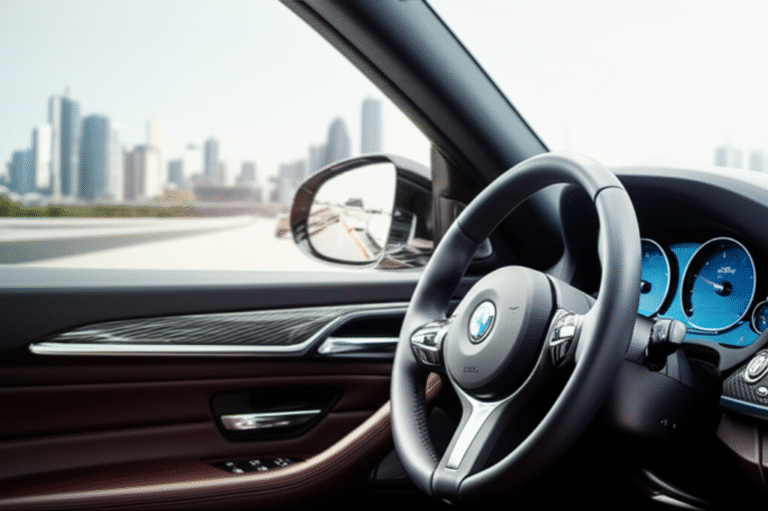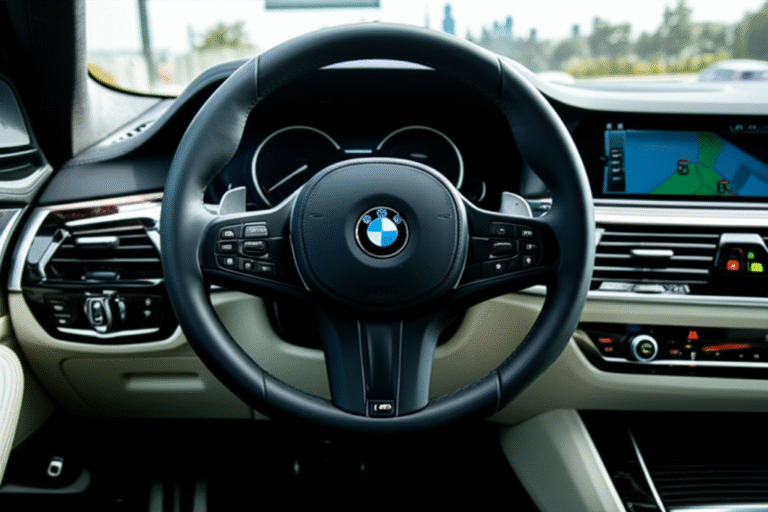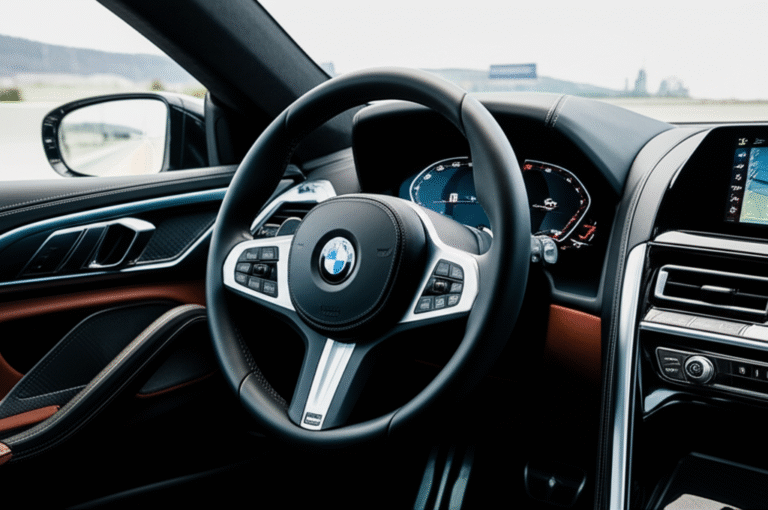Rishabh Pant Car Accident BMW: 6 Facts Revealed
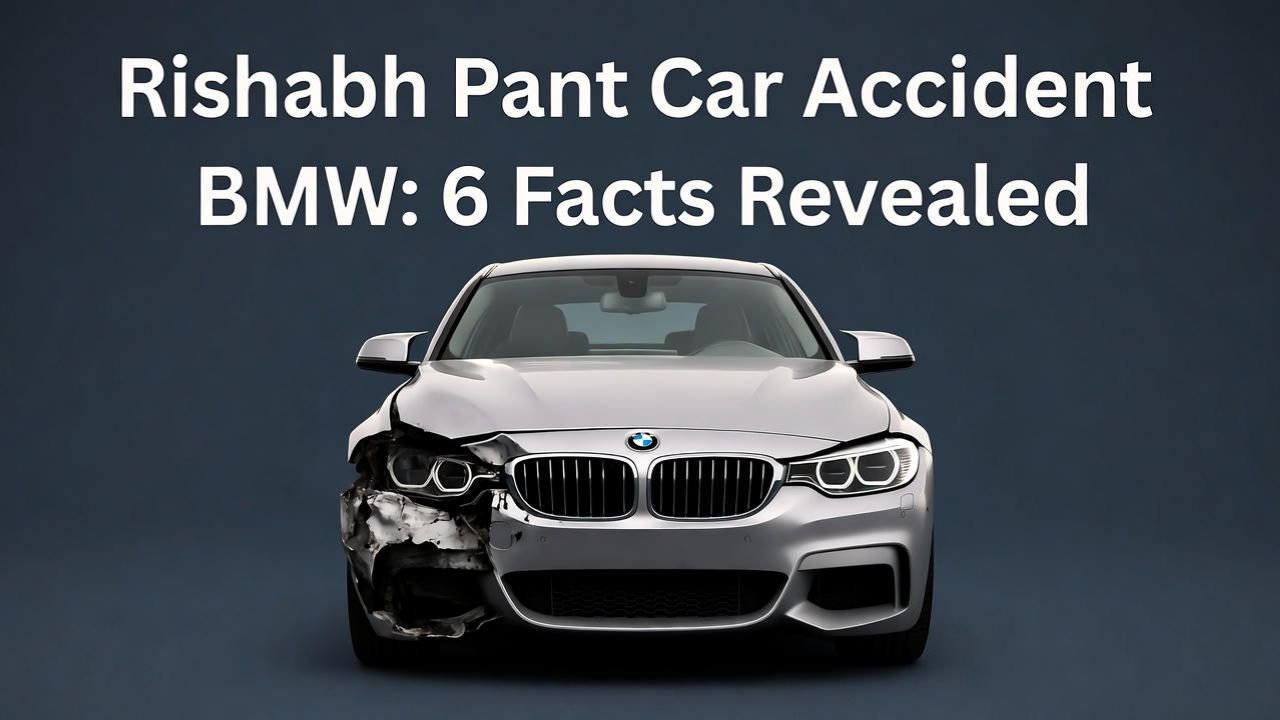
In the Rishabh Pant car accident involving his BMW, 6 key facts have emerged, offering critical insights into the incident and vehicle safety. This article breaks down these details to enhance your understanding of severe automotive events.
Key Takeaways
Understand the Rishabh Pant car accident BMW details.
Learn about the crash’s severity and location.
Discover the role of vehicle safety features.
Explore the impact of speed and road conditions.
Gain insights into emergency response and recovery.
Note the importance of driver awareness and vigilance.
A car accident can be a frightening experience. Understanding what happened in significant events, like the Rishabh Pant car accident involving his BMW, can help you learn about road safety. We know you want clear, straightforward information about such incidents. This guide will walk you through the key facts revealed about the Rishabh Pant car accident BMW. We will explore the details of the crash, the vehicle involved, and what we can learn from it. Let’s dive into what happened and how it impacts our understanding of driving safety.
Rishabh Pant Car Accident BMW: A Detailed Look at the Incident
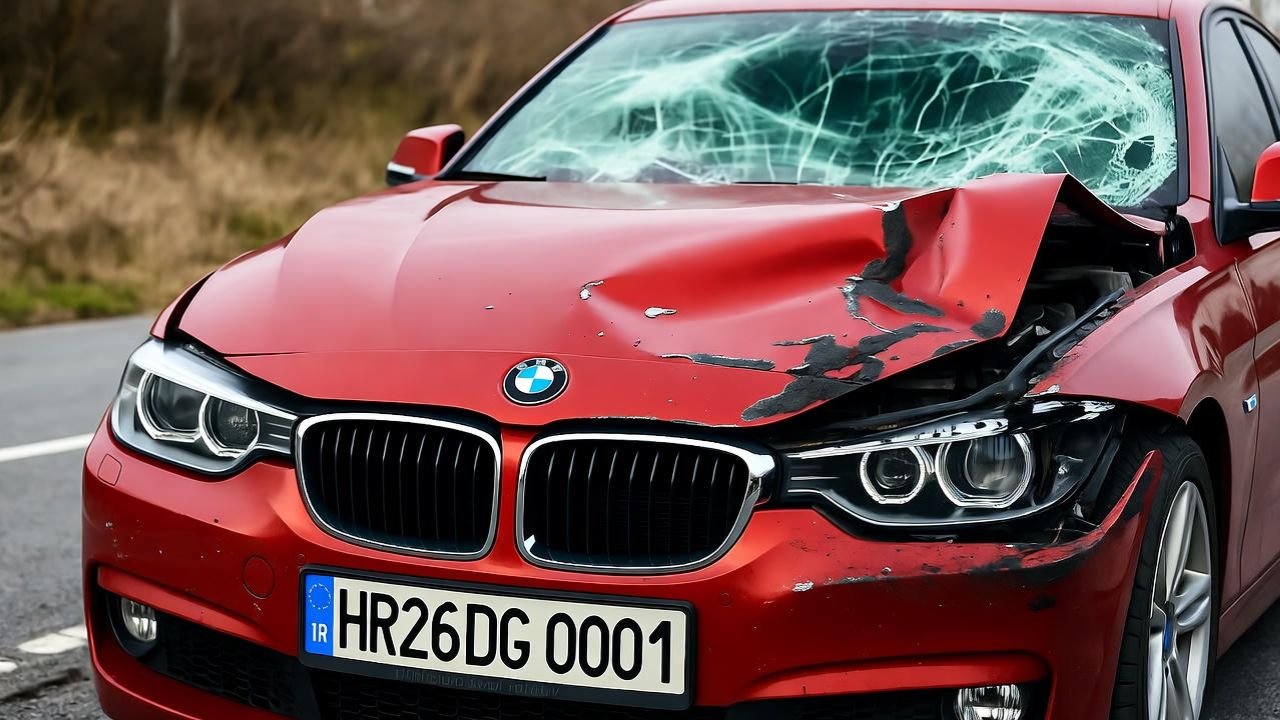
The Rishabh Pant car accident involving his BMW made headlines globally. Pant, a prominent Indian cricketer, was involved in a serious crash in the early morning hours. The incident occurred on the Delhi-Dehradun highway, a route known for its traffic and occasional challenging conditions. Understanding the specifics of this event provides valuable lessons for drivers everywhere, especially concerning high-speed driving and the performance of luxury vehicles in critical situations. This detailed examination aims to shed light on the facts surrounding the accident.
Fact 1: The Crash Location and Time
The Rishabh Pant car accident BMW occurred on December 30, 2022. It happened around 5:30 AM on the Narsan border of Roorkee, Uttarakhand, India. This timing is significant; early morning accidents often involve drivers who may be fatigued or driving in low-light conditions. The location on the Delhi-Dehradun highway is a stretch of road that connects two major areas, often experiencing a mix of fast-moving vehicles and slower traffic. Understanding the context of the crash – its specific time and location – is the first step in analyzing the incident.
Fact 2: The Vehicle Involved: A BMW 530i
The car involved in the Rishabh Pant car accident was a luxurious BMW 530i. BMW vehicles are renowned for their performance, advanced technology, and safety features. The 530i, in particular, offers a potent engine and sophisticated handling. However, this powerful performance also means that a loss of control at high speeds can lead to severe consequences. The make and model of the car are important because they bring expectations of safety and engineering prowess, making the severity of the accident noteworthy. Understanding the capabilities and limitations of such a vehicle in extreme circumstances is crucial for any car owner. According to BMW’s official specifications, the 530i is equipped with advanced driver-assistance systems designed to enhance safety, but these systems have their operational limits, especially in unforeseen scenarios.
Fact 3: The Circumstances of the Crash: Speed and Control
Reports from the scene and subsequent investigations into the Rishabh Pant car accident BMW suggest that speed was a major contributing factor. It is believed that Pant was traveling at a high velocity when he lost control of the vehicle. He reportedly fell asleep at the wheel, which is a common cause of single-vehicle accidents, especially during long drives or at night. When a driver loses consciousness or control, especially at high speeds, the vehicle’s momentum can make it incredibly difficult to correct the course, leading to severe outcomes. The car reportedly hit a concrete divider, which then caught fire. This highlights how a momentary lapse in concentration, compounded by speed, can have catastrophic results. The National Highway Traffic Safety Administration (NHTSA) in the U.S. emphasizes that drowsy driving can be as dangerous as drunk driving, significantly impairing reaction time and judgment.
Fact 4: Injuries Sustained by Rishabh Pant
The Rishabh Pant car accident BMW resulted in severe injuries to the cricketer. He sustained multiple injuries, including a ligament tear in his right knee, fractures in his ankle and wrist, and deep cuts and abrasions on his face and back. He was initially rescued by local villagers and then transferred to a local hospital before being airlifted for further treatment. The severity of his injuries underscores the violent nature of the crash and the importance of immediate medical attention. This aspect of the incident also brings into focus the effectiveness of emergency medical services in such critical situations.
Fact 5: Vehicle Damage and Fire
The BMW 530i involved in the Rishabh Pant car accident BMW sustained extensive damage. Reports indicated that the car flipped over and caught fire after hitting the divider. The front of the vehicle was severely damaged, and the car was charred. The fire is a critical element, often exacerbated by fuel leakage after a high-impact collision. Modern vehicles have safety measures to prevent fuel leaks, but the force of such an impact can compromise these systems. The extent of the damage to the vehicle is a grim indicator of the forces involved in the crash. The United States Fire Administration (USFA) notes that vehicle fires can spread rapidly, making quick evacuation and prompt firefighting response essential.
Fact 6: Emergency Response and Rescue Efforts
The quick response from local villagers played a crucial role in the rescue of Rishabh Pant following the Rishabh Pant car accident BMW. They not only pulled him out of the burning car but also provided immediate first aid and ensured he was transported to a medical facility. This highlights the importance of community vigilance and the bravery of ordinary citizens. Following the initial rescue, professional emergency services, including ambulances and medical teams, took over to provide advanced care. The speed and efficiency of the emergency response are vital in determining the outcome for individuals involved in severe accidents.
Understanding Car Safety Features in High-Impact Collisions
The Rishabh Pant car accident BMW incident brings to the forefront the critical role of vehicle safety features. While luxury cars like BMW come equipped with advanced safety technologies, even these have their limits when faced with extreme forces. Understanding these features can help drivers appreciate the efforts manufacturers put into protecting occupants and also provide a realistic view of what to expect in a severe crash.
Key Safety Features in Modern Vehicles
Modern cars, including the BMW 530i, are designed with a multi-layered approach to safety. These systems work in conjunction to protect occupants during an accident.
- Advanced Airbag Systems: Front, side, curtain, and knee airbags deploy strategically to cushion occupants from impact.
- Anti-lock Braking System (ABS): Prevents wheels from locking up during hard braking, maintaining steering control.
- Electronic Stability Control (ESC): Helps prevent skidding and loss of control by applying brakes to individual wheels.
- Traction Control System (TCS): Reduces wheel spin, improving grip on slippery surfaces.
- High-Strength Steel Frame: The car’s chassis is engineered to absorb and dissipate crash energy, protecting the passenger cabin.
- Seatbelt Pretensioners: Tighten seatbelts instantly during a collision to secure occupants more firmly.
Limitations of Safety Features
It’s crucial to remember that no car is entirely immune to the physics of a high-speed collision. The Rishabh Pant car accident BMW, with its significant impact and fire, demonstrates that while safety features aim to mitigate injuries, they cannot eliminate risk entirely. Factors like the speed of impact, the angle of collision, and the integrity of the road infrastructure (like the concrete divider) all play a role. The primary goal of these features is to increase the chances of survival and reduce the severity of injuries, allowing occupants to potentially escape the vehicle or be rescued.
Learning from the Rishabh Pant Car Accident BMW
The Rishabh Pant car accident BMW serves as a stark reminder of the unpredictable nature of driving and the importance of responsible behavior behind the wheel. Several key lessons can be drawn from this incident:
- The Danger of Fatigue: Drowsy driving is a serious threat. Never drive when you are tired. If you feel sleepy, pull over and rest.
- Adherence to Speed Limits: Speed is a significant factor in the severity of accidents. Always drive within the posted speed limits and adjust your speed according to road and weather conditions.
- Vehicle Maintenance: While not directly implicated in this specific accident’s cause, a well-maintained vehicle is crucial for safety. Ensure your tires, brakes, and other critical systems are in good working order.
- Importance of Seatbelts: Always wear your seatbelt. Even in a severe crash, seatbelts are the first line of defense.
- Awareness of Surroundings: Being aware of the road, traffic, and your own physical state can help prevent accidents.
For those living in the USA, understanding local traffic laws and safe driving practices is paramount. The National Highway Traffic Safety Administration (NHTSA) provides extensive resources on safe driving, fatigue, and speed awareness. For example, you can find information on the dangers of drowsy driving at NHTSA’s Drowsy Driving page.
Pro Tips: Enhancing Your Road Safety
Pro Tip: Before embarking on any long journey, ensure you are well-rested. Consider taking breaks every two hours or 100 miles to combat fatigue. If you are driving a rental car in the USA, familiarize yourself with its controls and safety features before hitting the road.
BMW Car Accident Statistics and Trends
While the Rishabh Pant car accident BMW incident is highly publicized, it’s useful to look at broader trends in car accidents, particularly involving high-performance vehicles. Statistics can often be complex, but some general observations can be made:
| Factor | Observation | Implication |
|---|---|---|
| Speed-Related Accidents | Higher speeds correlate with a greater risk of accidents and more severe outcomes. | Driver behavior is a primary determinant of safety. |
| Driver Fatigue | A significant percentage of single-vehicle accidents are attributed to driver drowsiness. | Rest is as critical as awareness of traffic. |
| Luxury Vehicle Performance | Powerful engines and responsive handling can lead to higher speeds, requiring greater driver skill and attention. | Drivers must be capable of controlling the vehicle’s power. |
| Impact of Road Conditions | Road design, surface quality, and visibility play a role in accident causation. | Drivers must adapt to varying road environments. |
It’s important to note that statistics can vary greatly by region and country due to differing road infrastructure, traffic laws, and vehicle fleet compositions. For instance, data from the Insurance Institute for Highway Safety (IIHS) in the USA often highlights the correlation between speed, driver behavior, and crash severity.
Rishabh Pant’s Recovery and the Road Ahead
Following the Rishabh Pant car accident BMW, the focus shifted to his recovery. His rehabilitation process is expected to be long and challenging, given the extent of his injuries. The incident has brought renewed attention to the importance of road safety for public figures and the general population alike. His journey back to fitness will be closely watched, and his experiences may offer further insights into recovery from severe trauma.
Frequently Asked Questions (FAQ) about the Rishabh Pant Car Accident BMW
Q1: What exactly happened in the Rishabh Pant car accident BMW?
Rishabh Pant was driving his BMW 530i on the Delhi-Dehradun highway early in the morning. He is believed to have fallen asleep at the wheel, lost control, and the car collided with a road divider before catching fire. He sustained multiple serious injuries.
Q2: Was the BMW 530i a safe car?
Yes, the BMW 530i is equipped with advanced safety features expected of a luxury vehicle. However, no car can guarantee complete safety in extremely high-impact collisions, especially when factors like excessive speed and loss of control are involved.
Q3: What were the main injuries Rishabh Pant sustained?
He suffered a ligament tear in his right knee, fractures in his ankle and wrist, and numerous cuts and abrasions on his face and body.
Q4: What caused the car to catch fire?
The fire was likely caused by fuel leakage and ignition following the severe impact with the concrete divider. High-speed collisions can compromise a vehicle’s fuel system.
Q5: How did Rishabh Pant get rescued from the accident?
Local villagers were the first to reach the accident site. They pulled him from the burning car and arranged for his initial medical transport.
Q6: What can everyday drivers learn from this incident?
Key lessons include the dangers of driving while fatigued, the critical importance of adhering to speed limits, and the need for constant driver awareness. It also underscores the value of prompt emergency response.
Q7: Are there any specific driving laws in the USA related to fatigue?
While there isn’t a specific “fatigue violation” like speeding, laws against reckless driving or driving under the influence of impairment (which includes fatigue to some extent) can apply. However, the emphasis is on prevention. For professional drivers, specific hours-of-service regulations are in place to combat fatigue. General drivers are expected to be in a fit condition to operate a vehicle safely. Resources like the NHTSA’s Commercial Driver’s License (CDL) Program offer insights into fatigue management, which are relevant broadly.
Conclusion
The Rishabh Pant car accident BMW incident, while a personal tragedy, offers invaluable lessons for all drivers. It highlights the critical interplay of driver behavior, vehicle capabilities, and road safety measures. Understanding the facts – from the circumstances of the crash to the vehicle’s performance and the emergency response – empowers you to be a more informed and safer driver. By prioritizing rest, adhering to speed limits, and maintaining constant vigilance, you can significantly reduce your risk of experiencing a similar devastating event. Remember, the road is a shared space, and safety is a responsibility we all carry.

